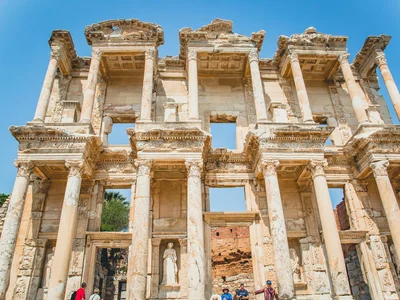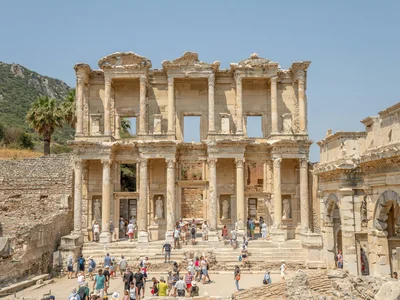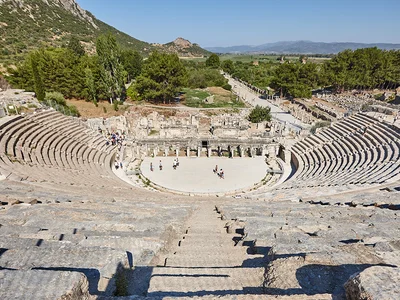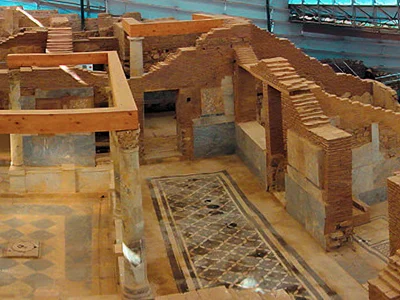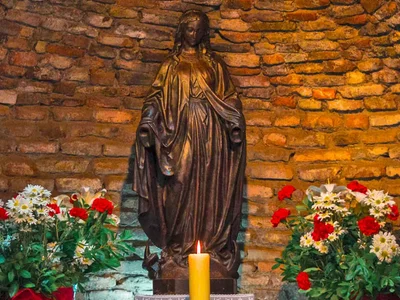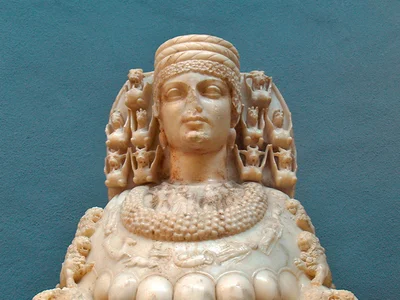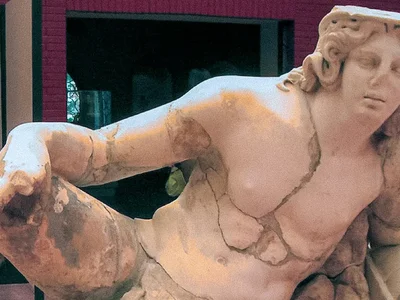Terrace Houses
The Terrace Houses in Ephesus are opulent residential dwellings situated adjacent to Curetes Street, across from the Temple of Hadrian. Dating back to around 200 BC, these houses were built on three terraces using sturdy stone walls. While the northernmost terrace featured a lavish residence dating back to the 1st century BC, the other terraces were dedicated to artisanal activities. During the construction of the Roman Dwelling Units, the earlier Hellenistic structures were dismantled and flattened.
Facing Curetes Street from the Temple of Hadrian, the "Houses on the slope" complex presents an intriguing sight. Inhabited by the elite and affluent class, these residences are also known as "houses of the rich" or "palaces on the slopes." Each house had an entrance opening onto the side street from a terrace, leading to a peristyle courtyard surrounded by rooms. Most of these houses were three stories high, with courtyards ranging from 25 to 50 meters in size. Adorned with a colonnade and marble flooring, the courtyards boasted running water, reflecting the luxurious lifestyle of their inhabitants.
The Terrace Houses are adorned with wall paintings and graffiti that provide a glimpse into the daily lives of their occupants. The artwork includes depictions of gladiators, caricatures, animals, and graffiti containing personal names, poems, and declarations of love. Of particular interest are lists detailing various goods and their prices, offering insight into the cost of living at the time.
To provide warmth, the houses utilized a heating system akin to those found in spas, with provisions for hot and cold water. Despite the absence of windows, natural light filtered through open halls. The interior rooms featured frescoed walls, often depicting mythological scenes, while the floors were embellished with intricate mosaics, showcasing the refinement and artistic tastes of the residents.

